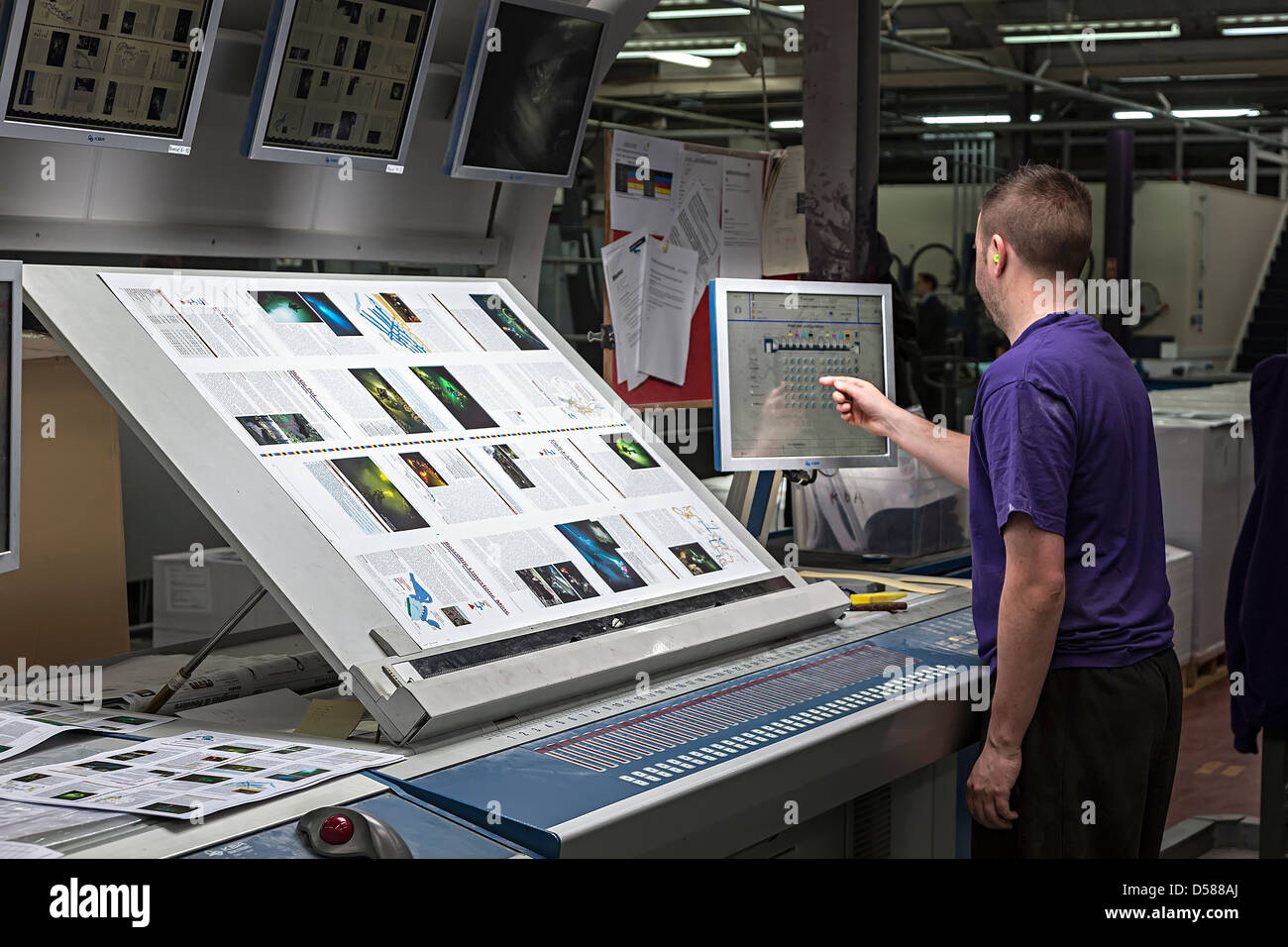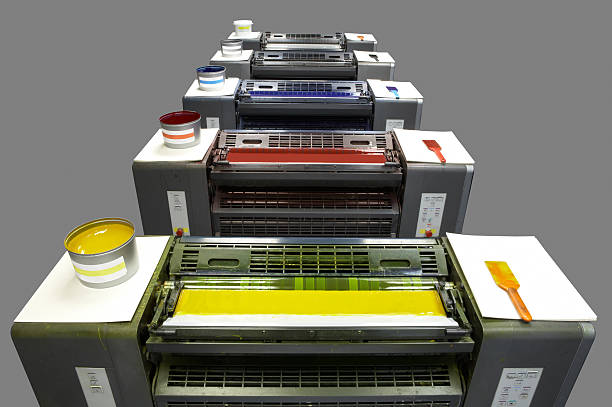litho printing for Catalogs, Flyers, and Brochures
litho printing for Catalogs, Flyers, and Brochures
Blog Article
A Comprehensive Overview to Comprehending Litho Printing Methods
The globe of litho printing, a strategy originating from the late 18th century, is an interesting mix of history, art, development and science. This comprehensive guide will certainly unravel the complexities of this printing approach, from the composition of litho inks to the challenges dealt with in contemporary applications. As we venture right into the complexities of lithography, the value of automation and sustainability in guaranteeing its future relevance comes to be increasingly clear. Stick with us as we trip into the captivating realm of litho printing.
The Historic Evolution of Litho Printing
The historical trajectory of litho printing, a critical development in the realm of interaction, is an exciting tale of human ingenuity. Birthed in the late 18th century by Alois Senefelder, this method was at first an affordable method of releasing staged jobs. Lithography, obtained from the Greek words for 'rock' and 'to create', made use of a smooth rock surface to transfer photos onto paper. The procedure developed with the development of the rotating press, which considerably boosted efficiency (litho printing). In the 20th century, the technology of countered lithography transformed the industry, enabling automation of top quality prints. Each phase of litho printing's development showcases humankind's ruthless pursuit of performance and high quality in aesthetic communication.
Decoding the Science Behind Litho Printing Inks
Moving on in the expedition of litho printing strategies, the emphasis now changes to the scientific research behind litho printing inks. The structure of these inks, their drying process, and shade mixing strategies create the backbone of this complex art form. Recognizing these aspects is crucial to mastering the craft and achieving the wanted print outcomes.
Structure of Litho Inks
In lithographic printing, the fundamental duty of litho inks can not be overemphasized. The make-up of litho inks differs depending upon its objective, however generally, they are composed of two main elements - automobiles and pigments. Pigments, the color-providing elements, are finely ground fragments put on hold in the automobile, a liquid that brings the pigment onto the printing surface area. The vehicle is an intricate combination of solvents, oils, and materials, which influence the ink's drying time, attachment, and gloss. Additionally, different ingredients are existing to enhance certain buildings like flow, drying, and resistance to ecological effects. Each part plays an essential component in the last print's top quality, making the specific formula of litho inks an elaborate scientific research.
Ink Drying Process
From the structure of litho inks, interest transforms to the remarkable procedure of ink drying. Two primary approaches are made use of in litho printing: oxidative drying out and absorption. Absorption, on the various other hand, entails the ink permeating into the paper fibers, which is a quicker procedure yet can lead to less vivid shades.
Shade Mixing Techniques
While the drying procedure plays a vital role in litho printing, the scientific research of color mixing strategies holds equal significance. The scientific research behind litho printing inks likewise takes right into account the openness of the ink, which affects how colors overlay and mix.
The Art and Style Elements in Litho Printing
Litho printing takes a breath life into art and design with its special components. The procedure entails creating a photo on a lithographic limestone plate or metal plate with a smooth surface area. The picture is then published onto a check medium, normally paper, by moving the ink from the plate. What collections litho publishing apart is its ability to duplicate detailed styles with high fidelity, making the output virtually similar to the original art work. This is attained through using different line techniques such as cross-hatching, stippling, and hatching, Continue which permit for a series of tonal effects. Furthermore, litho printing accommodates a selection of colors, allowing artists to create vibrant and vibrant prints. This combination of precision and versatility makes litho printing a preferred selection for many artists and designers.
Modern Applications of Litho Printing Strategies
Litho printing techniques have actually discovered comprehensive usage in the modern-day business field. Its impact and importance remain to grow with the arrival of brand-new technologies and innovations in the field. This area will certainly check out these modern applications and the transformative role they play in the printing market.
Commercial Litho Printing Makes Use Of
In today's electronic age, one may question the relevance of typical printing approaches. Yet, litho printing stays an important component of the commercial field. High-volume printing tasks, such as the production of books, newspapers, and product packaging, depend on litho printing for its ability to provide remarkable image top quality and expense efficiency. The process, which involves transferring a tattooed photo from a plate onto a rubber blanket and after that to the printing surface, offers unparalleled consistency. This makes it ideal for work calling for a big print run. Litho printing likewise offers a broad shade spectrum, above that of digital printing. This makes it the best selection for jobs that demand vivid, high-grade shade reproduction.
Developments in Litho Printing
Pushing the borders of typical methods, modern innovations have sustained a host of developments in litho printing. One famous development is electronic litho printing, which combines the virtues of digital innovation with litho's top notch outcome. These developments emphasize the long-lasting significance of litho printing in the contemporary globe.
Discovering the Refine of Litho Printing: Detailed

Difficulties and Solutions in Contemporary Litho Printing

In spite of the accuracy and custom that litho printing happily promotes, it is not without its collection of contemporary difficulties. The most widespread concerns basics include the high first setup cost, problem in printing variable information, and environmental problems because of chemical use. Remedies are emerging as modern technology develops. Digital litho printing permits cost-efficient short runs and very easy personalization, resolving the concern of variable data. Environmentally-friendly inks and much safer plate-making processes minimize ecological problems. Additionally, innovations in automation have reduced labor prices, even more democratizing the lithography process. Thus, while there are challenges, the litho printing industry is proactively adapting to meet them head-on, ensuring its importance in the future.
Final thought
Finally, litho printing, with its rich history and clinical complexities, holds a significant place in the print sector. As the overview exposes, it's a synthesis of art and innovation, with modern-day developments guaranteeing its importance. However, the industry faces obstacles that need innovative services, with a concentrate on automation and sustainability. The future of litho printing pivots on its capability to adapt to these transforming needs, affirming its enduring worth in an advancing market.

Report this page